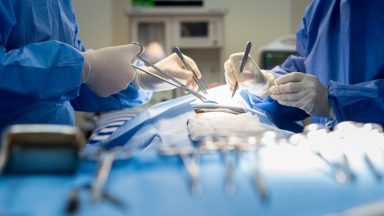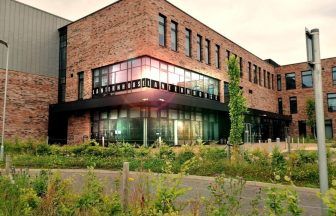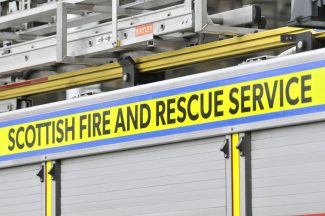A new service that can greatly improve outcomes for patients suffering the effects of a stroke has been introduced by NHS Greater Glasgow and Clyde.
The Interventional Neuroradiology Thrombectomy Suite aims to reduce the chance of long-term brain injury and other life-altering conditions following a stroke.
Thrombectomy removes a blood clot from a vessel in the brain which has caused a stroke, and the procedure takes place under a general anaesthetic or sedation.
The new service, which aims to reduce the need for lengthy hospital stays and long periods of rehabilitation, is based within the Institute for Neurological Sciences (INS) at the Queen Elizabeth University Hospital.
Dr Wazim Izzath, a consultant neuroradiologist with NHSGCC and clinical lead for the unit, said the suite was a “major step forward for the treatment of stroke in the west of Scotland”.
He added: “Every day we will have 17 staff from a range of specialisms working together to deliver these important procedures.
“Our facilities are doubled up, with two procedure rooms, two anaesthetic rooms and two recovery bays, so we can care for multiple patients at the same time.
“Our motto here is ‘Time is Brain’ – meaning the faster we can help patients the better their potential long-term outcomes – and this entire facility is set up in such a way that we can work quickly, with the Thrombectomy procedure itself being carried out in as little as half an hour.
“That’s 30 minutes to change someone’s life.”
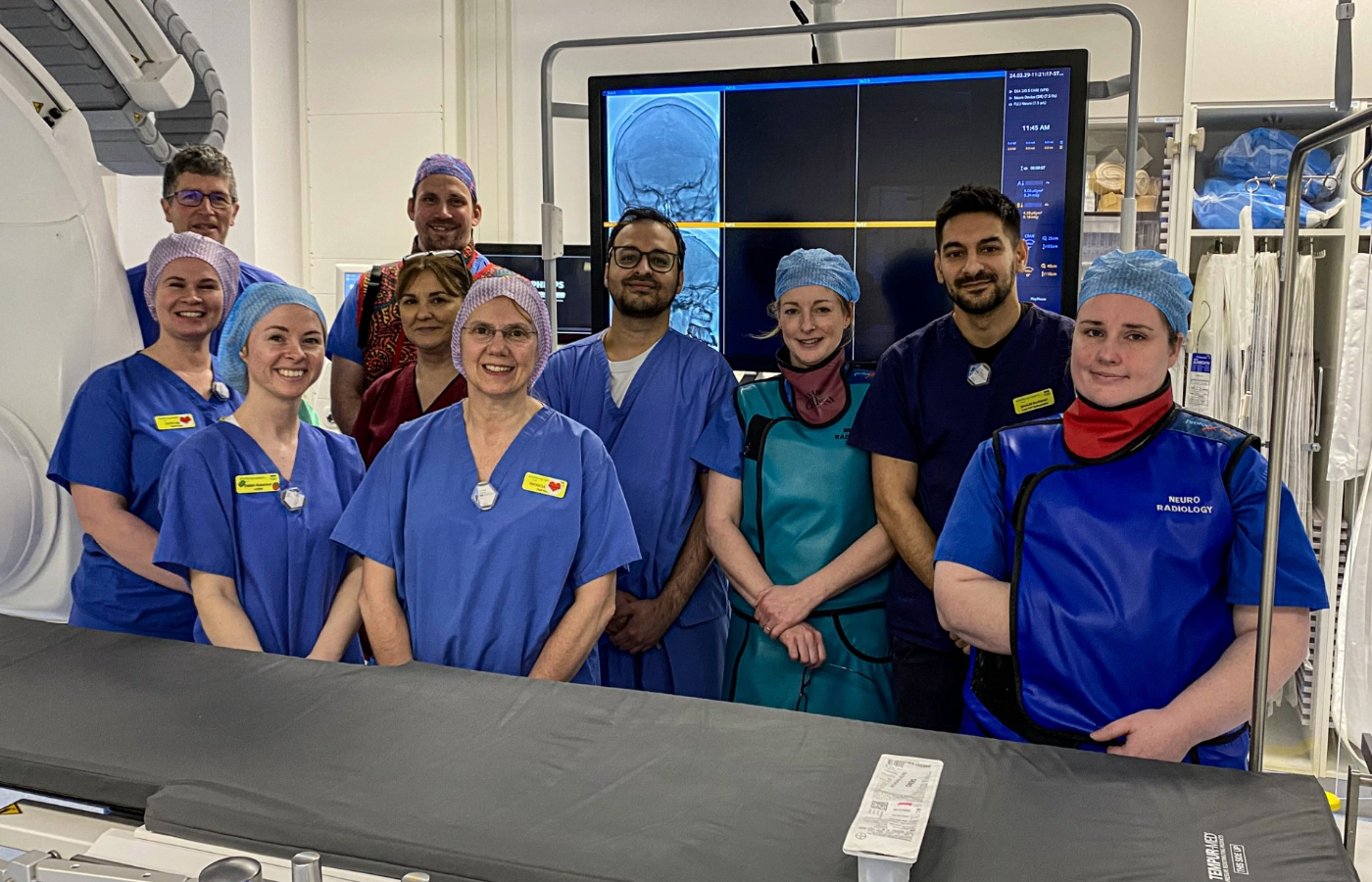 NHS Greater Glasgow and Clyde
NHS Greater Glasgow and ClydeThe two machines central to making the suite operate cost £1.2 million each, with support equipment required.
Susan Groom, director of regional services at NHSGGC, said: “This suite represents a significant investment in the care we can provide for people in Greater Glasgow and Clyde and throughout the west of Scotland.
“It will be staffed by some of the most skilled clinicians and medical scientists in the country and, working together as a highly effective unit, they will be able to many stroke patients every year.”
Dr Izzath added: “While this new suite allows us to manage a significant increase in the number of patients we can see every year, we don’t want to stop here.
“Where there is additional capacity we will exploit that, and as soon as we can we will continue to grow and develop the service, so even more people can be helped.
“Thrombectomy isn’t appropriate for every patient who suffers a stroke, but when we can use it, the procedure can have life-changing results.
“For example, we had a patient who underwent thrombectomy. He was young, in his late 30s, and when he came to us he was suffering severe effects of stroke, including losing the ability to speak and move his right side.
“We performed the procedure, and he was starting to improve, and now he is back to normal without disability and enjoying life with his young family. That’s the power of the service we will be able to provide here.”
Pamela Philp, Lead Nurse at the INS, said: “The word life-changing is used all too often in healthcare, but it’s entirely appropriate when describing the work we’ll be able to do in the thrombectomy suite.
“I have seen patients left with serious, life-limiting issues after a stroke – speech loss, partial paralysis – and the aim of all stroke care is to reduce those effects and give people as far as possible their old life back.
“People need to be at home with their families and getting on with life – this new facility will greatly increase our ability to help them do that.”
For more on Interventional Neuroradiology and thrombectomy, visit here.
Follow STV News on WhatsApp
Scan the QR code on your mobile device for all the latest news from around the country


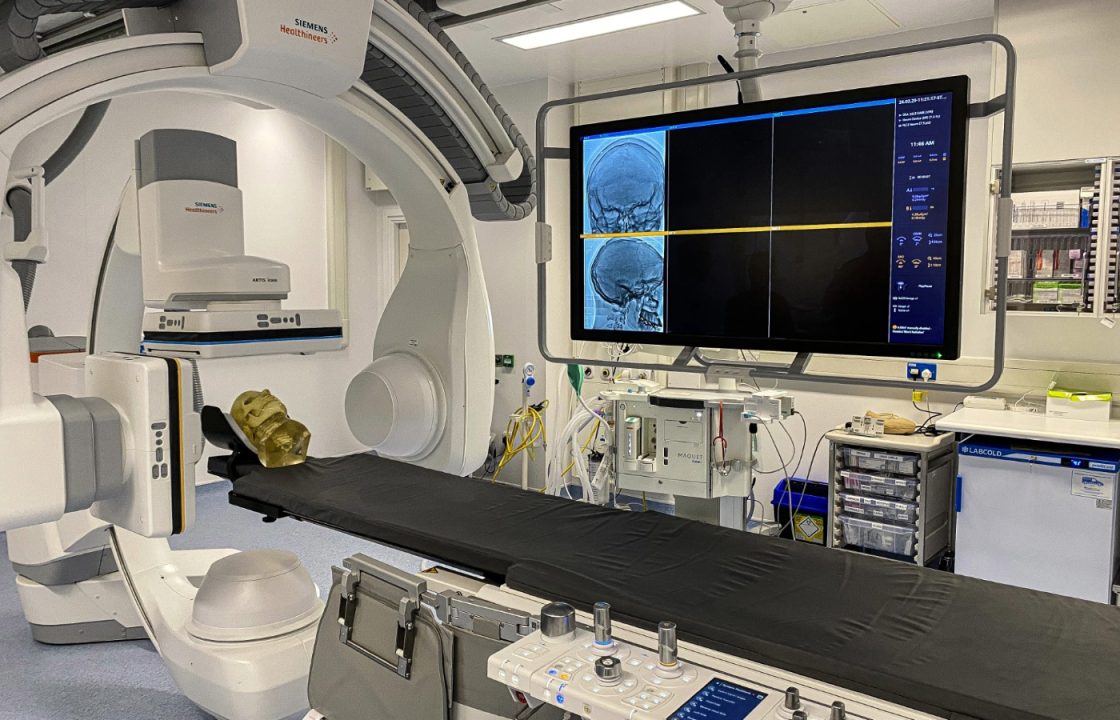 NHS Greater Glasgow and Clyde
NHS Greater Glasgow and Clyde














